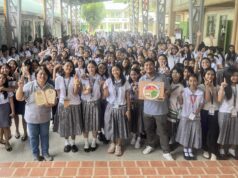In today’s cyberspeak, a reply of “ copy “ whether verbal, written or texted generally means “ yes, I understand “ or “ I got the message “ or “ noted.”
It used to be, when I was in school, a bad word as in being caught by the teacher of copying another’s work or answers to a test. This is cheating! “ Copia” meant sanctions of failing and even being kicked out of school.
When I entered the world of academe on the teacher’s side, I became more aware of the big no-no that copying or copiahan meant in the world and culture of academic research and work. It was “daya” or a more specific disparaging word, “plagiarism.”
This is a mortal sin, that of assuming ownership of another’s intellectual work and property. This is cheating and thievery of the first order.
However, copying and plagiarism have now began to assume more complex and complicated dimensions.
There are laws on property rights, both physical and intellectual, and there are academic rules regarding securing permission and usage with attribution.
With ICT and the internet, there are even assertions that these do not fall within the ambit of plagiarism and that there are no Philippine laws on plagiarism and consequent illegal acts. Wow, shades of Tito, Vic and Joey!
Whether you are Supreme Court Justice del Castillo, Larry Henares, Manny Pangilinan, Tito Soto or a desparate professor trying to finish a dissertation, using the intellectual work and property of another without their consent or attribution in accordance with established procedure, intentionally or not, is copying in the copia and daya sense.
It is stealing and plagiarism. You can adopt a posture of innocence, “palusot” or explanation no matter how forced, or acknowledge the lapse and make remedial action.
What about “reverse engineering?” One breaks up into its component parts a car or computer or some equipment or machine, studies the parts and reassemble them back again.
From the understanding and lessons learned, one makes his own clone of the subject, probably better and a little more differentiated.
Shades of Japan and Sony! And consequently, shades of Korea and then China, India and Malaysia?
Where do we draw the line between stealing another’s property which must be protected to be beneficial to the rightful owner and availing of properties which by time and inherent nature belong to the general public’s resource entitlement and common good?
For example, do we keep exclusive and secret the cure for cancer or some major disease affecting humanity and the right to access and avail of it?What about the Bible or a great literature, novel, poem or symphony?
There are laws which have been devised to govern property rights and man’s entitlement to both exclusivity and general access. This means a delicate balancing and, of course, disagreements and litigation.
Private property is an invention and device of the historical period of societies.
Most tribal communities, even the pre-Spanish Filipino tribes, understood better and operate under arrangements of communal property.
Mother Nature and its fruits belong to everyone.
With private property and differing concepts of copying, the “cheating” culture and process become imbedded into the structures and mechanics of society. We see this in corporations, business, the economy, government, political movements and even religious institutions.
The newspapers are filled with specific news and examples. We are not surprised.
But neither should we surrender. “ It is better to light one candle than to curse the darkness.”
That is a quote, but for the senior moment in me I do not know the specific reference source. Or is it because of the “copy” culture?




